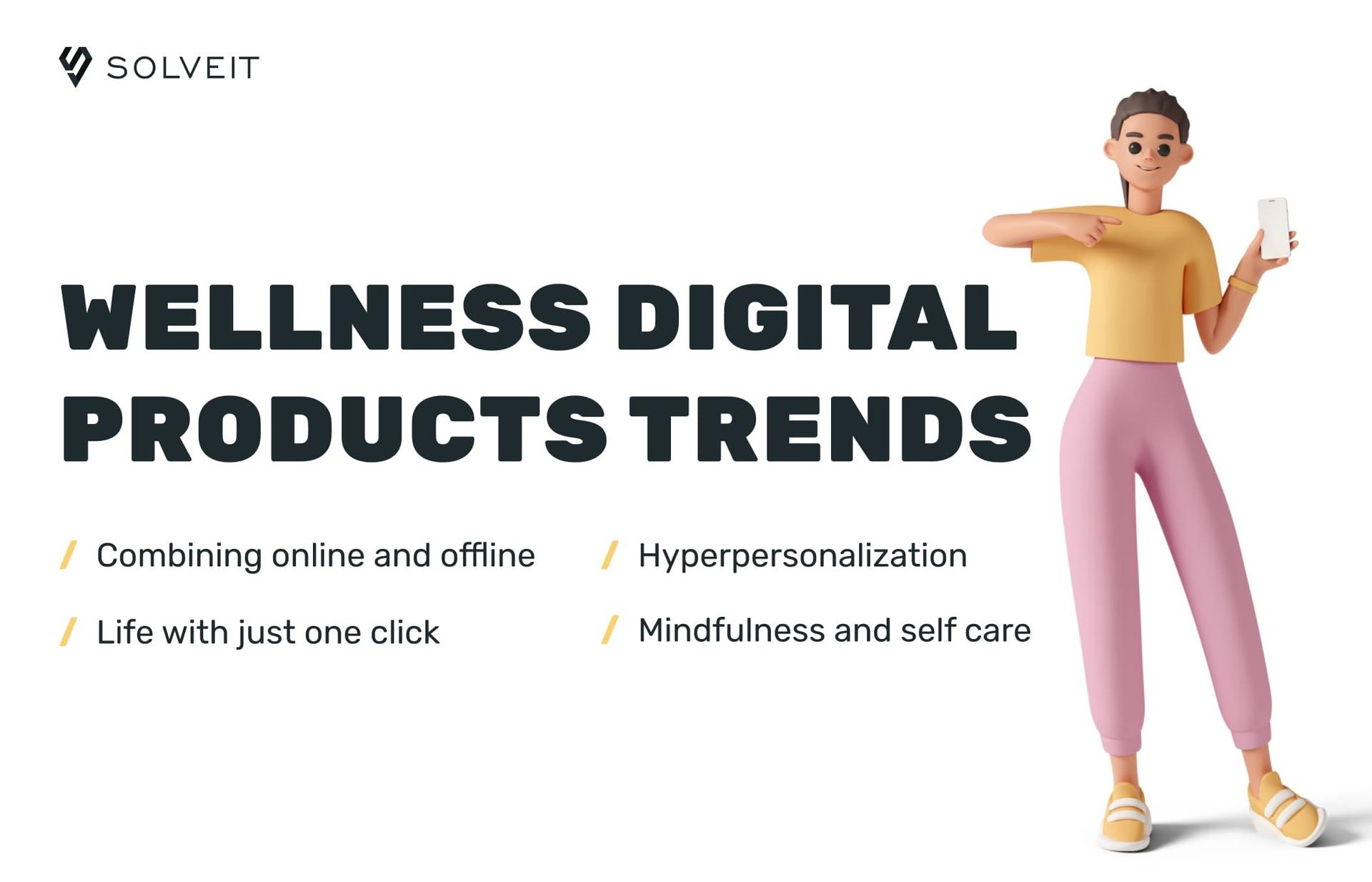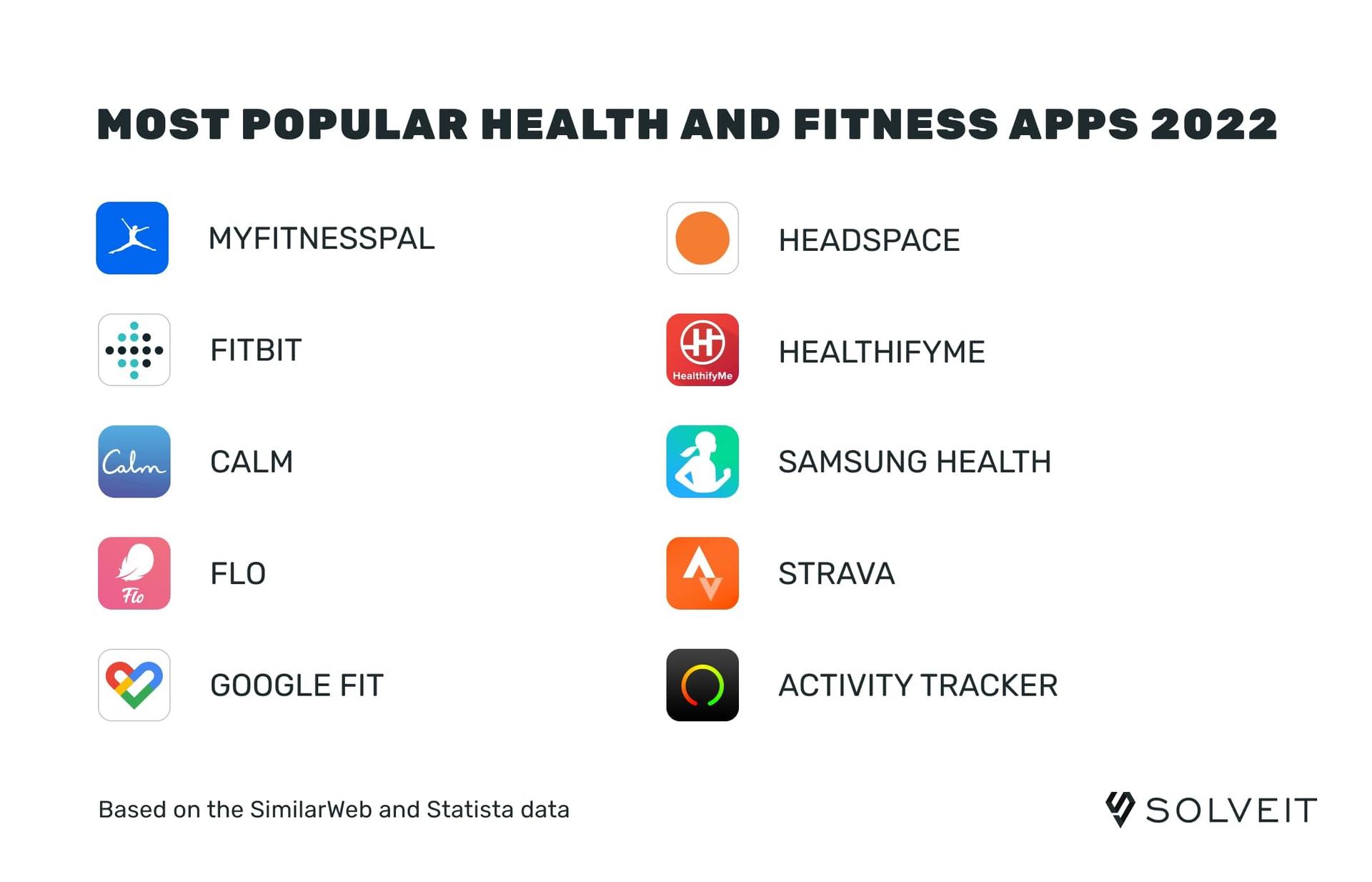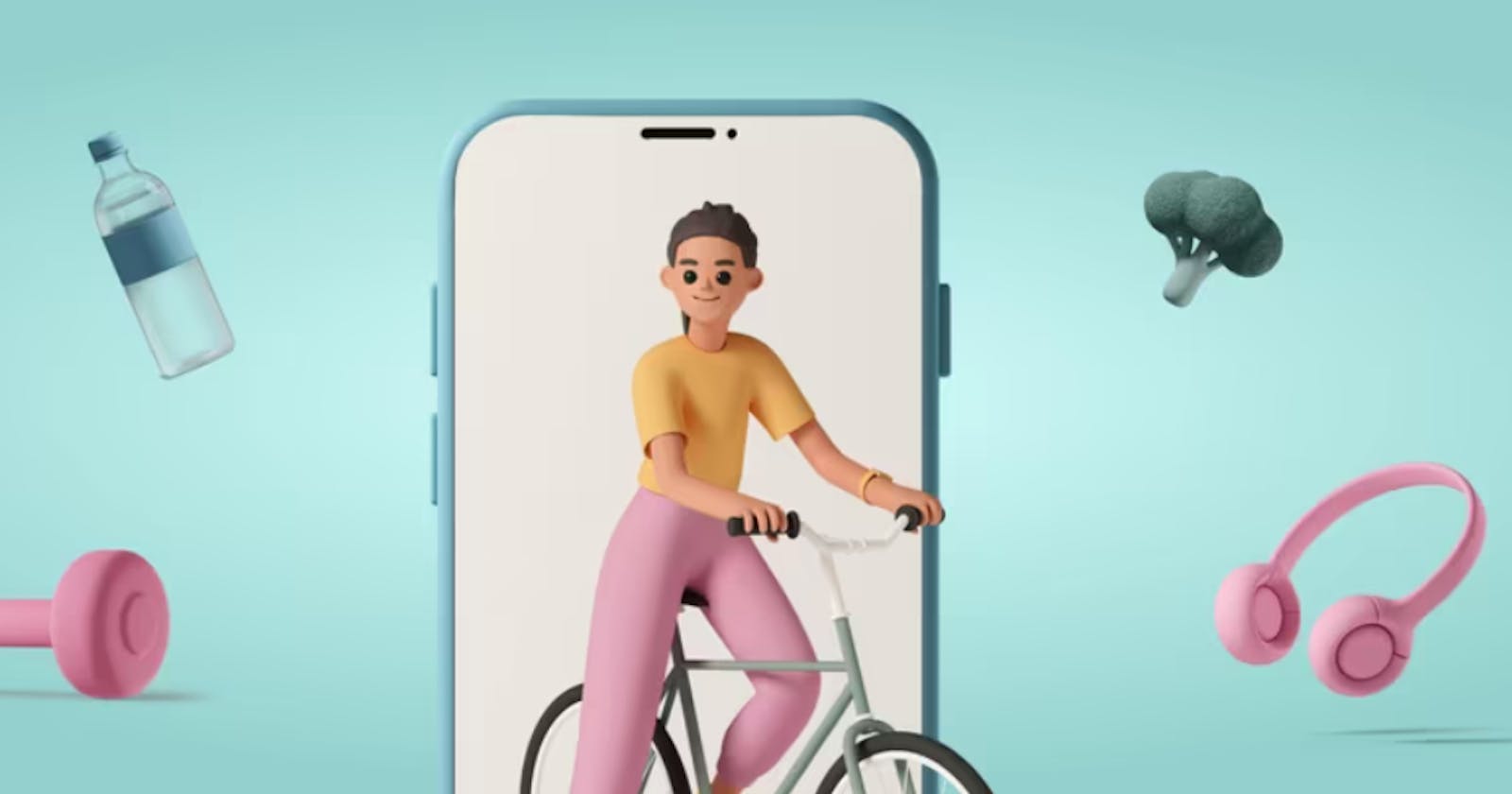Table of contents
No doubt that a healthy lifestyle is still a huge trend in 2023. People’s motivation to be fit and healthy is growing strong. And if you’ve been thinking about health and fitness app development, now is a perfect time to find a unique niche and make your product go viral!
Today, the number of people who tend to use health and fitness mobile apps as a great alternative to costly personal trainers has skyrocketed. So, the demand for such apps keeps going up despite the high competition on the market.
Read this blog post, if you’re looking for actionable tips and design ideas to develop your future fitness app. We’re going to talk about how to create a competitive and profitable fitness app that would be able to engage people and build a loyal fanbase easily.
A promising market of fitness apps
The most recent report from Statista shows an increasing market demand for digital fitness & well-being apps. The total revenue in this segment already reached almost $25.38bn in 2022, almost doubling since 2019. And it is expected to grow even further at an annual growth rate of 14.72% while reaching a projected market volume of $43.96bn by 2026.
More info from Statista regarding these markets:
User penetration is expected to hit 15.92% by 2026;
The average revenue per user is expected to amount to $26.64;
Most revenue is expected to be generated in China ($6,054.00m in 2022).
Impressive, huh? 😏
What is more, health & fitness apps have been witnessing rising retention rates between Q3 2020 and 2022: the growth accounted for 15.6%. Retention rates measure app usage and loyalty, which directly impacts app revenue. The growing retention rate may be a good sign for newcomers as the industry isn’t yet overcrowded with intense competition.

Health and fitness app development trends:
Combining online and offline. Since mobile devices became an inevitable part of our lives, we interact with them daily for almost any reason from shopping to chatting with AI.
Life with just one click. Today, we got used to doing exercises at home without costly investments or time-demanding actions like driving to a gym, finding the right trainer, etc.
Hyperpesonalization. The ability of fitness apps to analyze activity, nutrient intake, and more complex health parameters from wearable devices provide unprecedented opportunities for personalization and customization. This ensures you get exactly what you need just when you need it.
Mindfulness and self-care. The last decade was highlighted by an increased number of people who got into sports, healthy eating, healthy lifestyle, etc.
Considering a booming app development industry tied to fitness and a healthy lifestyle, we’d say there are still enough great opportunities and profitable niches for promising products. So, if you've been putting off custom fitness app development, the perfect time is now!
Types of fitness mobile apps
The main purposes of all wellness and fitness apps are the same: to provide guidance, motivation, and accountability, and to give people control over their health, activity, and life. However, 3 types of such fitness apps should be distinguished. Note, that this is not a strict rule - sometimes, an app includes features of different app types.
1. Online fitness and workout apps
According to Grand View Research, this is by far the most popular health & fitness app category.
Common workout app features include fitness programs, yoga & meditation practices, proper breathing techniques, and personal affirmations with (or without) an aid from a coach. These fitness apps help to create effective workout plans, get in touch with online fitness trainers, set goals, and track progress every step of the way. The most popular apps in this particular category are Calm, Fitbit, and 7 Minute Workout.
2. Diet and nutrition apps
These fitness apps help users take control of their eating habits and maintain a balanced nutrition intake. Features include planning meals for proper nutrition, calorie counters, nutrition monitoring, personal meal plan preparation and suggestions, shopping lists, and working tips for weight loss (or gain). The most popular apps in this category are MyFitnessPal, Fooducate, and Carb Manager.
3. Activity tracking apps
Activity-tracking fitness apps help users take control, monitor and track their sports activities like jogging, and steps per day, as well as sleep tracking, ovulation & period tracking. However, this category also includes mobile health applications which are tied to specific health needs like heart rate or sugar levels.
Often, activity-tracking apps are paired with wearable devices and come as one of the features used as a tracking solution (like the one embedded in the Apple Watch). The most popular apps in this category are Strava, C25K, and HealthifyMe.
.jpg&w=1920&q=75)
What makes a fitness app successful?
Based on the SimilarWeb and Statista data of the top fitness apps within the USA, we chose 10 top health fitness apps to see what made them so successful.

So, based on this list, we identified the key success factors of these health and fitness apps:
According to practical experience, mobile apps that offer flexible subscription options to users tend to stay afloat and make more money.
Personalization is a really big thing today and it is the main ingredient that can make any app go viral. According to recent research conducted by McKinsey & Co, 71% of consumers in the US currently want to receive personalized interactions.
The quality of data and its ability to engage users to boost the value of any fitness app tremendously. Thus, it’s important to involve health & fitness experts in creating high-quality content like workout video tutorials, proper nutrition advice, hints from health professionals, etc.
Users love to interact with cool and catchy designed fitness apps with smooth experiences and without bugs. Check out how to build a high-performing application with our expert advice.
Reacting fast to users’ reviews and feedback is extremely important for building a stronger bond and connection with your community. That’s how you build a perfect roadmap to deliver a product that users will be delighted to use daily.
How to monetize a fitness app?
Once you come up with an app idea, don’t wait any longer and start building your fitness product. But keep in mind that there is one of the most important issues that you need to think about and figure out - fitness app monetization.
Freemium.
This is by far one of the most effective app monetization options that draw in lots of new users by letting them get a hang of the fitness app and explore its basic features for free. Once the trust and loyalty to the product are built, you can organically offer advanced features for a fee so that users get the most out of your fitness app.
Subscriptions.
Unlike freemium, with subscriptions, you make money by selling your exclusive content. The subscription option usually offers weekly/monthly/annual plans where users pay for a certain period after going with a free trial first.
In-app advertisement.
Gives free access to an app with ads (monetization via partners) but users can pay a fee to switch off the ads. This monetization option works pretty much anywhere but don’t go too heavy on ads.
In-app purchases.
In this case, the fitness app can be free but you make money by selling specific programs or services like weight loss programs or a 1-time consultation with a coach.
Paid apps.
Users must pay a set fee to use the fitness app after a free trial is available for new users. Experience shows that this is the least effective option in terms of health app monetization success while people tend to be extra cautious when it comes to health-related issues.
“The most relevant option for wellness apps in most cases will be freemium solely or combined with in-app purchases/ads. Anyway, the best practice is to make a decision based on your market analysis and user research which one would be the best option for your product.”
- Waleriya Bagnyuk-Yurkantovich, Business Analyst at SolveIt.
Must-have fitness app features
Personal profile. Includes personal data, settings, goals, and programs the user selected.
Diaries. This feature allows users to track their daily activities based on the app’s type and purpose (meals consumed, hours slept), gives suggestions on how to improve parameters for a certain user, and data insights (charts, activity/macronutrient ratios display). This fitness app feature should be easy to use. For example, for food tracking, integrated barcode scanners can be used for easy data input.
Expert blog and recommendations. Provides exclusive content, insights, hints & tricks from your experts in text form, shortened or full-sized videos, audio files, downloaded tutorials, etc. Can be either free or premium. Ideally, this feature works best if personalized for each user. The content categories should be easily searchable with the ability to save or download to users’ mobile devices.
Catalog of courses or special programs. Includes food recommendations and daily menu for weight loss, tips on how to improve sleep or get rid of the sleep disorder, effective 7-days workout programs, etc. Can be free or premium.
User content. Make sure that social media is embedded into your app where users can share posts, videos, and stories with like-minded people to boost engagement.
Social media sharing. Allows sharing achievements and app content with friends on Facebook, Instagram, etc. This feature is very useful for support and motivation purposes, but it also works great for drawing more new users straight to your app.
Step-by-step: fitness app development
Step 1. Investigation / Discovery phase
The discovery phase requires a business analyst who will conduct the competitive analysis, as well as target audience research to come up with the refinement of your product concept and prepare the necessary technical specification for your featured fitness app based on the use cases. At this stage, you should also decide on a monetization model, define MVP version features, and build your UI kit.
Step 2. Choose technologies
As native app development adherents, we suggest choosing native because it is the best approach in terms of performance.
If you are more into cross-platform fitness app development, we recommend Flutter. Flutter is considered nowadays the best framework for cross-platform apps because the performance results of Flutter-based apps are very close to native apps while the cost and development time remains lower.
Step 3. Prototyping and design
This step involves wireframing, basic fitness app design, and having your app prototype ready. Then go with the prototype testing and evaluate the results.
The design must be made by professionals who not only make beautiful visuals but also have proper experience in creating UX. So, the app should be designed in a way that any user can intuitively navigate it.
Step 4. Fitness App Development & support
At this point, you need to work on MVP development and app testing. There are 3 options to create a fitness app:
Hiring an in-house team
Working with freelancers
Outsourcing the project to a development company
Long story short, from the cost and quality ratio perspective the latter option is the best one. At SolveIt, we have hands-on experience in developing health & fitness mobile apps. Contact us to find out how we can help you.
Step 5. Launch, track, and maintain
After the first MVP release of your fitness app, the exciting journey of growing your app begins. You can finally test it on real users, and gather feedback. It will help you decide on what are the most demanded features and create a roadmap for further development. You should also start promoting your product, launch marketing campaigns, and analyze user behavior to make your app go viral.
How much does it cost to build a fitness app
Fitness app development cost heavily varies depending on several factors:
Features and integrations
Tech stack
The complexity of UI/UX design
The expertise of the team
Development team location
The cost of developing a fitness app MVP by a reliable development agency starts from $50,000. You may find astonishing numbers like $15,000 or even $5,000, but from our experience, for a quality bug-free fitness application this budget is barely enough.
To develop a full version of a fitness app, expect the cost from around $100,000 to $250,000.
The numbers mentioned above are pretty rough. To get the precise fitness app cost estimation based on your specific requirements contact us for a free consultation.
Summary
Starting fitness product development is always challenging, costly, and risky. To make every step of the way smoother, hire a reliable development partner like SolveIt, whose experts’ insights will provide the edge you need for building the best app and snatching the market from your competitors. While you or your team can focus on the financial issues, promotion, and user acquisition.

